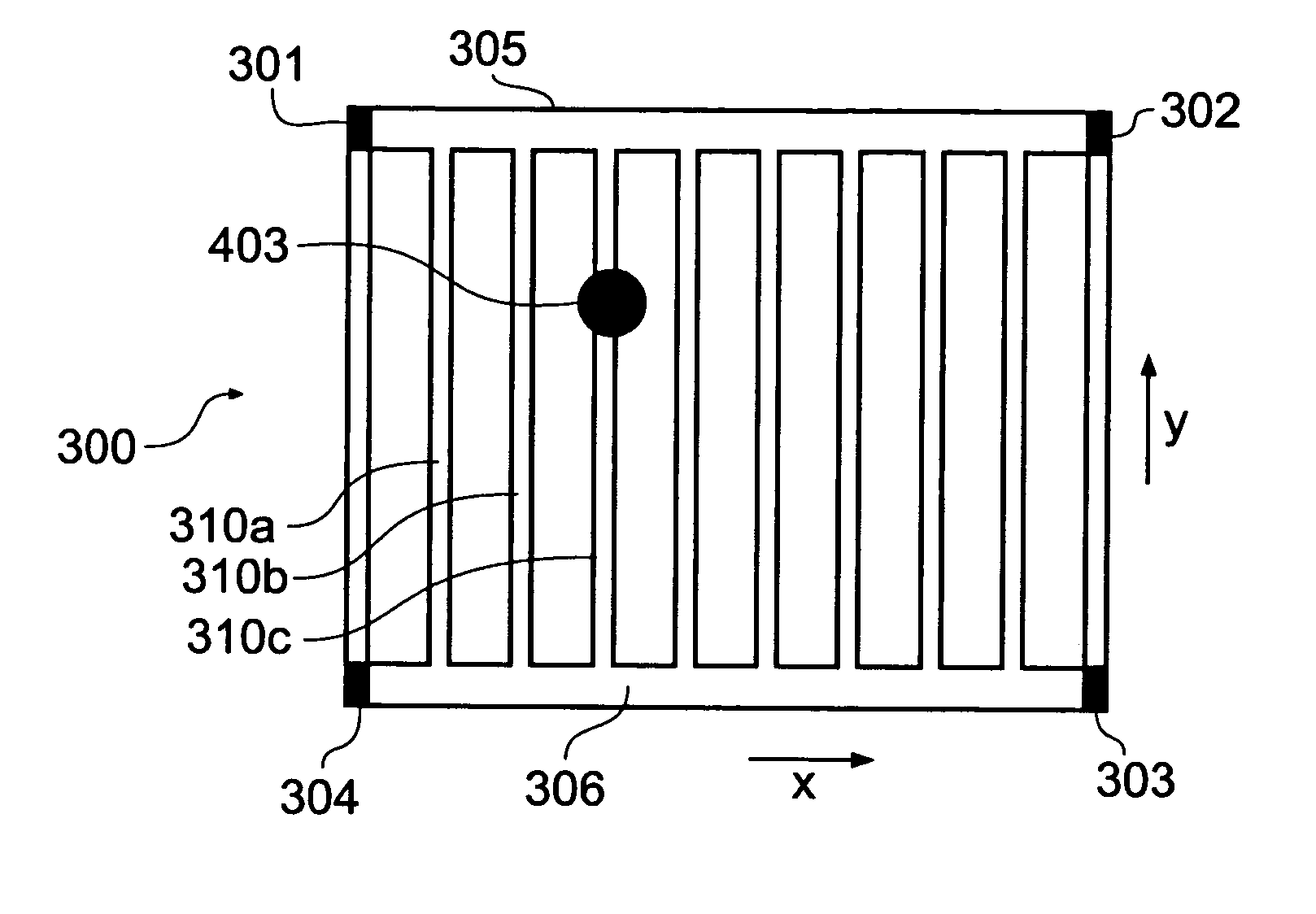Anisotropic touch screen element
- Summary
- Abstract
- Description
- Claims
- Application Information
AI Technical Summary
Benefits of technology
Problems solved by technology
Method used
Image
Examples
Embodiment Construction
FIGS. 1a and 1b show the prior art for 2DxT technology prior to the use of correction hardware or algorithms. The pin cushion effect of FIG. 1a is well understood. It arises from the current sharing of capacitance-induced flows from the point of touch to the four connection points; the effect is seen in both 2DCT's and in 2DRT 5-wire touch screens which rely on a galvanic version of the same voltage gradients as a 2DCT, but with a flexible ‘pickoff’ cover sheet that deflects and connects to the 2DRT under pressure. The pin cushion effect in these elements increases as the location of touch becomes more distant from all connection points, along an edge; it is at its worst at the centers of the screen edges. As shown in FIG. 1b, the current flows establish vectors that introduce a graduated distortion with position, resulting in a parabolic curvature of reported location. The vectors are generally non-orthogonal. Instead the angle and magnitude of correction vary wildly depending on t...
PUM
 Login to View More
Login to View More Abstract
Description
Claims
Application Information
 Login to View More
Login to View More - R&D Engineer
- R&D Manager
- IP Professional
- Industry Leading Data Capabilities
- Powerful AI technology
- Patent DNA Extraction
Browse by: Latest US Patents, China's latest patents, Technical Efficacy Thesaurus, Application Domain, Technology Topic, Popular Technical Reports.
© 2024 PatSnap. All rights reserved.Legal|Privacy policy|Modern Slavery Act Transparency Statement|Sitemap|About US| Contact US: help@patsnap.com










